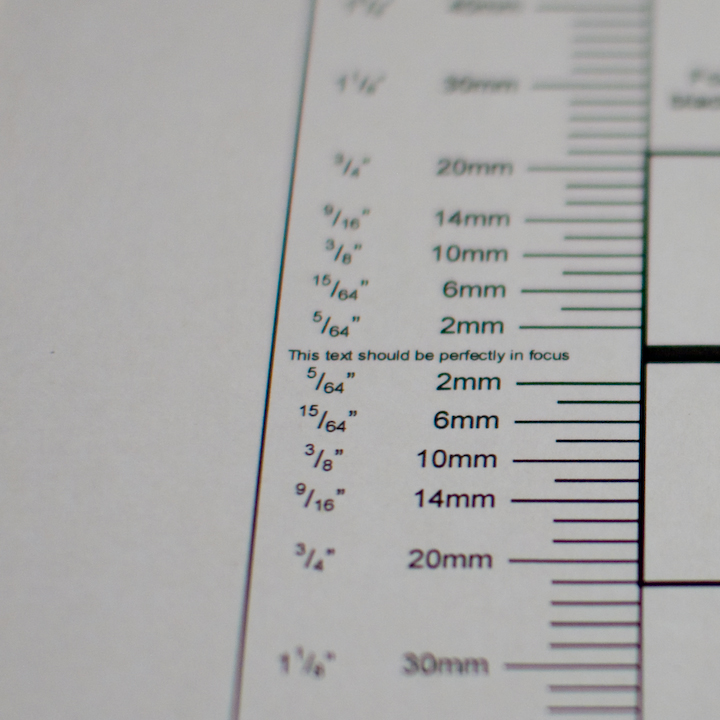
Get In Focus

Recently, the factor most limiting the quality of the pictures I take has been focus. When you shoot a few hundred pictures, a few will always constitute focus failures, but my fail ratio has been too high recently. I’ve thought about it and there are a few things wrong with my approach, but I thought I’d reassure myself that my camera and lenses were playing nice with each other.
The nice folks over at the Pentax-Discuss Mailing List recommended focustestchart.com which has Nikon in its title but the product works fine with any old camera. The idea is, you print out their PDF, you lay out the chart page really flat, you line your camera up, point it down 45º at the chart, and adjust your focus.
I have three everyday working prime lenses; the 40mm and 21mm “pancakes” from Pentax, and the Sigma 30mm f1.4.
If the Focus Test Chart is to be believed, both the 40mm and the 30mm needed adjustment, and the 21mm didn’t. Which may only be because the 21mm is at f3.2 and thus has more depth of field. Here are the “before” and “after” shots with the Sigma, forced to f1.4 for the minimum depth-of-field.
My Pentax K20 remembers adjustments on a per-lens basis, so these ones have been programmed in.
Will this actually improve my overall sharpness? Absolutely yes it will, because it establishes that my lenses and camera are about right, so the problem is clearly with the operator. I need to bear down on this.
Oh, and then there’s the pancake wide-angle, which, even opened out wide as it goes, has more depth of field than any sane person could want in any situation.
Comment feed for ongoing:
From: alex waterhouse-hayward (Nov 19 2008, at 13:36)
There are other reasons for focus problems that you may not be aware of. After a couple of years of using a heavy 85mm F-1.4 Nikon lens on my Nikon FM-2 I suddenly had focus problems. I took the camera to the Nikon service (when they had one in Richmond) and they immediately told me the problem. The heavy lens had torqued the body. When they used a collimator to check the four points on the focal plane (In a film camera you open the back and the device measures each corner of the shutter plane) they found that the shutter plane was not at all parallel to the film. The insurance paid for a new camera. I took my new FM-2 to the service shop and when they checked with the collimator they found it was way off. The next Nikon was all right.
I wonder about the plastic material used in modern cameras and how they adjust, grow or shrink with heat and cold. The more expensive DSLRs have a metal inner body.
I guess one quick test that would not need a chart would be to manually focus your camera at infinity and then autofocus it and see if the focus is at the same spot.
And out of curiousity how does one check with a digital camera in which you cannot open the back to find out if the sensor is at exactly 90 degrees to the lens axis?
Alex Waterhouse-Hayward
[link]
From: Derek K. Miller (Dec 01 2008, at 14:19)
My guess is that people replace their digital SLRs so much more frequently than we did with film cameras that there may not be enough time to torque the body with heavy lenses so that focus is out. But Alex has a good point there, worth keeping in mind. His FM2 was a solidly built camera, and if it could be bent by the weight of a lens, today's cameras might be even more susceptible.
On the other hand, plastic is probably more elastic than metal in some circumstances, so how much effect there will be from this problem is an interesting question.
[link]